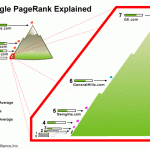Four typical SEO issues with Shopify and how to fix them
30-second summary:
While Shopify is one of the most popular platforms for ecommerce organizations, the CMS has a number of issues that can be problematic for SEO
Finest SEO practices generally use to all CMS platforms, but Shopify has several built-in features that can not be customized, meaning some products require more distinct workaroundsEdward Coram-James goes over concerns such as limited URL structure and duplicate content, offering recommendations on how to fight Shopify's drawbacks in these areas
Shopify is the most widely-used ecommerce platform, making it much easier than ever before for services to sell their stock online. Its easy-to-use CMS has actually made it especially helpful for smaller merchants during the pandemic, permitting them to claw back around 94% of what would have otherwise been lost sales.Similar to any new site, a fresh Shopify store will require a good deal of effort on the part of its webmaster to establish the essential presence for users to find the website, not to mention transform into customers. And just like any CMS, there are a couple of SEO obstacles that store owners will require to clear to guarantee that their site finds its audience effectively. Some of these hurdles are more deep-rooted than others, so we've broken down 4 of the most common SEO issues on Shopify and how you can fix them for your webstore.

1. Limited URL structure
In similar way that WordPress splits material in between posts and pages, Shopify's CMS enables you to divide your product listings into 2 main categories-- items and collections-- together with more basic posts, pages, and blogs. Creating a new product on Shopify allows you to note the specific items you have for sale, while gold coast seo collections offer you the opportunities to bring your diverse products together and arrange them into easily-searched categories.
The issue most people have actually with this enforced system of arranging content is that Shopify also enforces an established hierarchical structure with restricted customization alternatives. The subfolders/ product and/ collection should be consisted of in the URL of every brand-new item or collection you publish.
Regardless of it being a huge bone of contention with its users, Shopify has yet to address this and there is no service currently. As an outcome, you will need to be incredibly mindful with the URLs slug (the only part that can be tailored). Guarantee you are utilizing the best keywords in the slug and categorize your posts smartly to offer your items the very best possibility of being discovered.
2. Immediately produced replicate content
Another frustrating problem users have with categorizing their material as a product or collection takes place when they include a particular item into a collection. This is because, although there will already be a URL in place for the item page, connecting a product to a collection immediately develops an extra URL for it within that collection. Shopify instantly treats the collection URL as the canonical one for internal links, instead of the item one, which can make things exceptionally tough when it concerns ensuring that the right pages are indexed.
In this instance, nevertheless, Shopify has actually permitted repairs, though it does involve modifying code in the back end of your store's theme. Following these instructions will instruct your Shopify site's collections pages to internally connect only to the canonical/ item/ URLs.
3. No trailing slash redirect
Another of Shopify's replicate content problems connects to the routing slash, which is essentially a '/' at the end of the URL used to mark a directory site. Google deals with URLs with and without a tracking slash as unique pages. By default, Shopify immediately ends URLs without a routing slash, however variations of the same URL with a trailing slash are accessible to both users and search engines. This can normally be prevented by enforcing a site-wide tracking slash redirect by means of the site's htaccess file, however Shopify does not enable access to the htaccess file
Shopify rather recommends that web designers use canonical tags to notify Google which variation of each page is preferred for indexing. As the only fix offered up until now, it will have to do, however it's far from perfect and typically leads to data attribution concerns in Google Analytics and other tracking software application.

4. No control over the site's robots.txt file.
Beyond the CMS requiring users to create duplicate versions of pages against their will, Shopify likewise prevents webmasters from being able to make manual edits to their shop's robots.txt file. Obviously, Shopify sees this as a perk, taking care of the pesky technical SEO concerns in your place. When items go out of stock or collections get pulled, you can neither noindex nor nofollow the redundant pages left behind.
In this circumstances, you are able to modify the style of your store, integrating meta robotics tags into the section of each appropriate page. Shopify has actually produced a step-by-step guide on how to hide redundant pages from search here.
